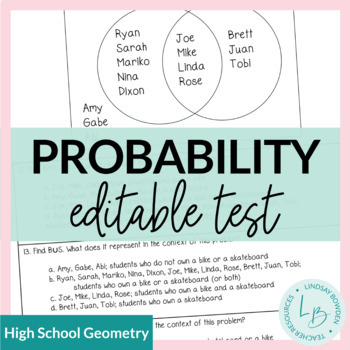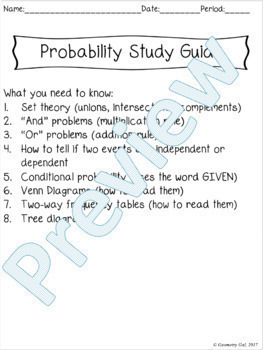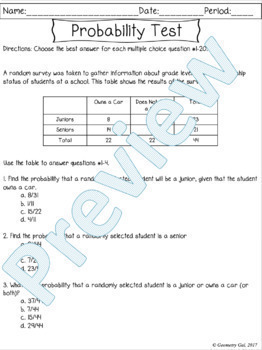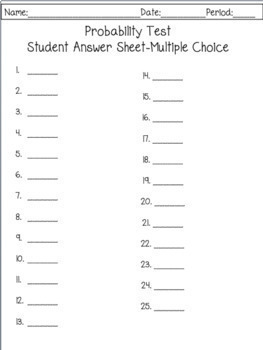Probability Test with Study Guide
- Zip
Also included in
- Get a complete High School Compound and Conditional Probability unit including lessons on set theory, outcomes, and basic, compound, and conditional probability, and more! These ready-to-use resources include everything you need to teach high school probability to your on-level or lower-level/speciPrice $32.00Original Price $32.00
Description
This resource includes a probability unit test and study guide for a compound and conditional probability unit.
The editable versions are PowerPoints where you can edit text as needed.
Topics covered:
- Set theory (sample space, union, intersection, complement, Venn diagrams)
- Outcomes and basic probability (coins, dice, tree diagrams, Fundamental Counting Principle)
- Compound probability (problems using addition and multiplication rules, frequency tables, independent/dependent events, mutually exclusive/overlapping events)
- Conditional probability (A given B, B given A, frequency tables)
There are 25 multiple choice questions and 5 free response questions. Test and answer documents are divided so that if you only wanted to give the multiple choice section, you have that option.
Answer key and student answer sheet included!
These assessments pair great with my:
*Conditional Probability Task Cards
**OR: Get all of my probability products in this Probability Unit Bundle!
Terms of Use:
This product should only be used by the teacher who purchased it. This product is not to be shared with other teachers. Please buy the correct number of licenses if this is to be used by more than one teacher.
Did you know?
You can receive TPT store credits to use on future purchases by leaving feedback on products you buy! Just click on "My Purchases" under "Buy"!
Connect with me!






